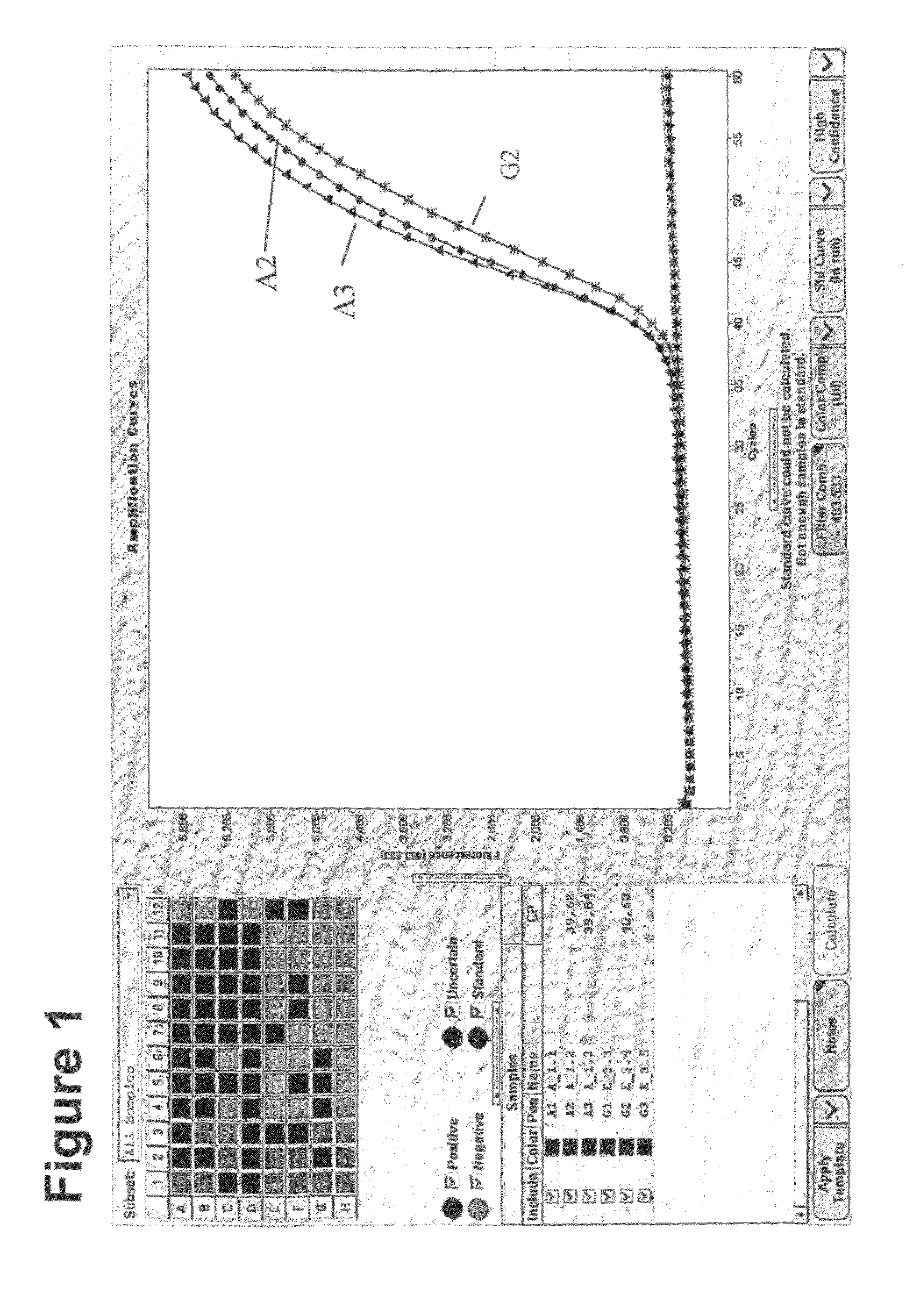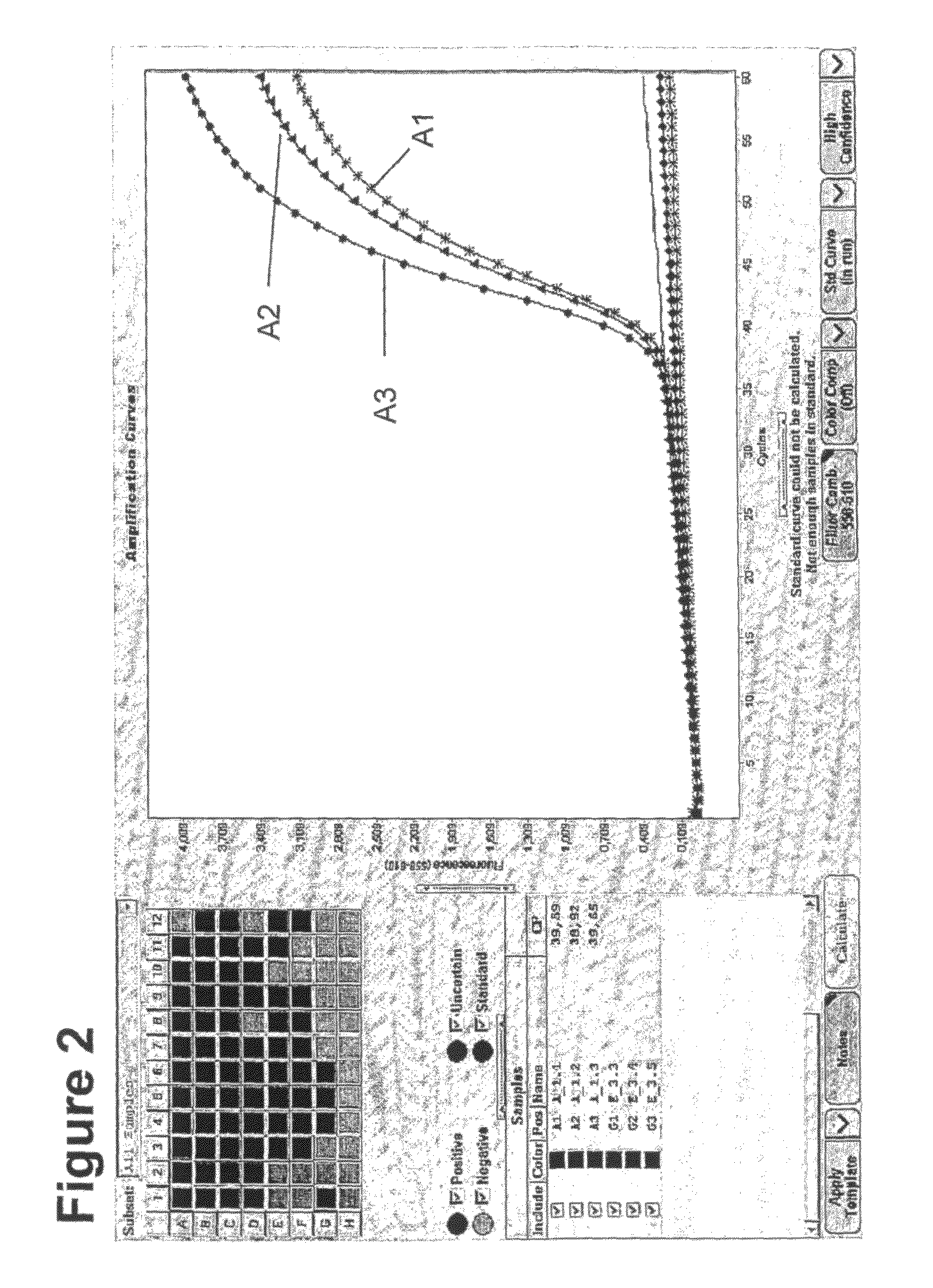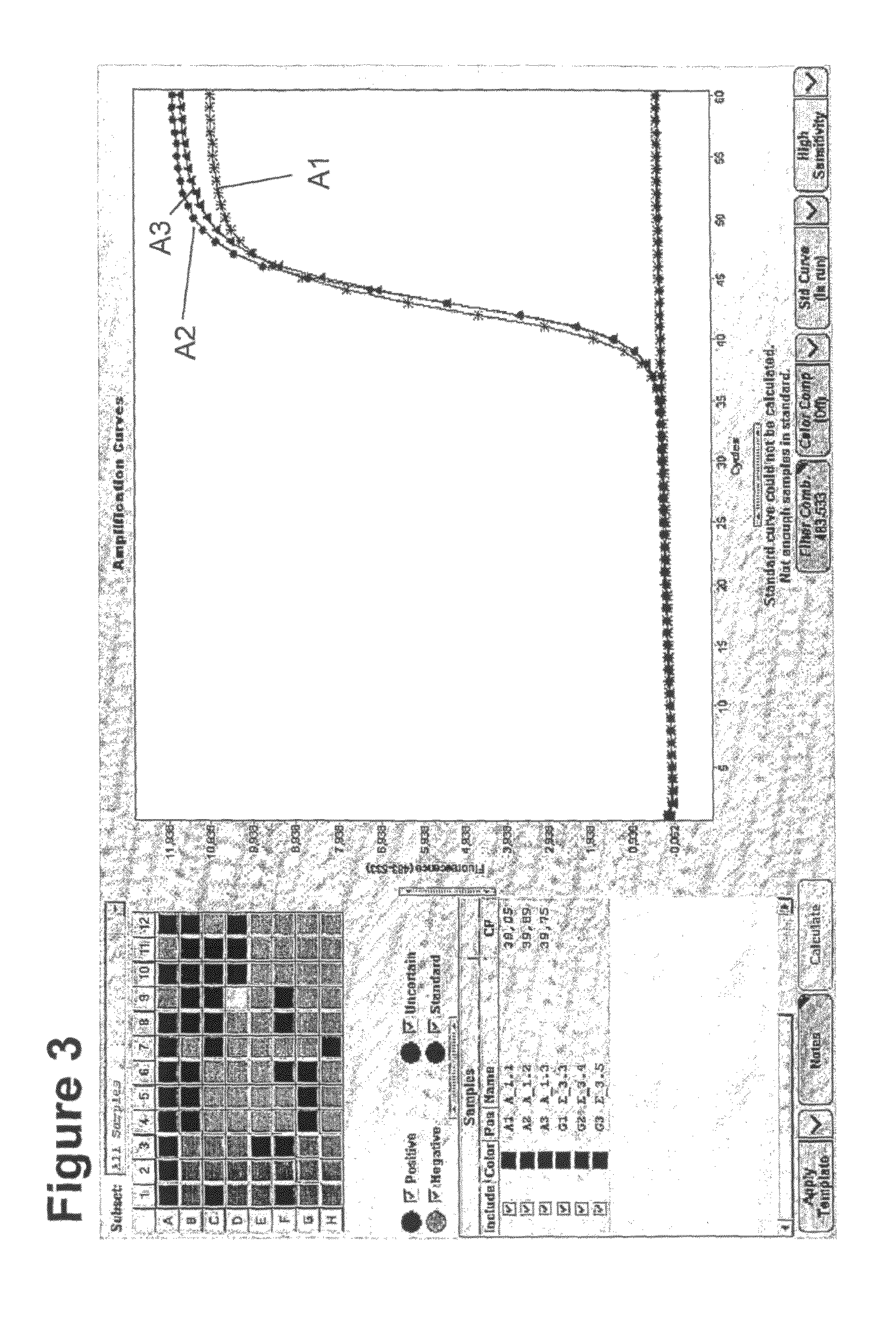Method for methylation analysis
a methylation and analysis method technology, applied in the field of methylation analysis, can solve the problems of low sensitivity of tests, high false negative rate, and diseased individuals remaining undiagnosed and untreated, and treatment, if any, may be less effectiv
- Summary
- Abstract
- Description
- Claims
- Application Information
AI Technical Summary
Benefits of technology
Problems solved by technology
Method used
Image
Examples
example 1
Comparison of Beads and Kits for the Purification of Genomic DNA from Remote Samples (e.g. Plasma Samples)
[0600]Blood plasma samples were purchased from Cliniqa (San Marcos, Calif., USA; Article Number 1503). DNA was extracted from 5 ml of plasma by means of kits and beads listed in Table 1 following the protocols supplied by the vendors. Where protocols were designed for lower volumes, parallel extractions were performed, the sample combined and the yield determined for 5 ml. Yield calculations were determined by comparison with the beads of the MagNA Pure LC Total Nucleic Acid Kit, Large Volume (Article Number 03264793001) as a standard. Table 1 shows the yield (=recovery in %) of genomic DNA as determined by CFF1 quantification assay. The CFF1 assay was performed as described in WO 2007 / 039101. The yield calculations were derived from multiple experiments.
[0601]Table 1 overview of beads and kits tested for purification of genomic DNA from plasma samples.
[0602]
Yield (=recovery Bea...
example 2
Comparison of Beads and Kits for Purification of Bisulfite Treated DNA
[0603]100 ng of a 1:1 mixture of high molecular weight and low molecular weight DNA of bisulfite treated DNA containing uracil-sulfonate and not uracil were purified with different beads according to the recommendations of the manufactures. Table 2 shows the yield (=recovery) of bisulfite treated DNA as determined by CFF1 quantification assay. The CFF1 assay was performed as described in WO 2007 / 039101.
[0604]Table 2 overview of beads tested for purification of bisulfite treated DNA.
[0605]
Yield(=recoveryBead / KitManufacturerin %)Beads of the ChargeSwitchInvitrogen Life0Total RNA Cell KitTechnologies(Article Number CS14010)Beads of the CST ForensicDNA Research0DNA Purification KitInnovations Ltd.(Article Number 11200 C)ZymoBeads ™Zymo Research35-50(Article Number D3004-3-4)CorporationSiMAG / FK-Silanol BeadsChemicell GmbH65-75(Article Number 1101-1 or1101-5)Beads of the chemagic ViralChemagen Biopolymer80-90DNA / RNA Kit...
example 3
Isolation of Genomic DNA from Remote Samples (Blood)
[0606]A) Isolation by Means of Beads of the Chemagic Viral RNA / DNA Kit (Chemagen Biopolymer-Technologie AG, Germany, Article Number 1002)—Protocol I
[0607]Plasma was collected as described in WO 2006 / 113770. In brief, blood was drawn in 10 ml EDTA plasma tubes using the vacutainer system. Tubes were centrifuged at 1500×g for 10 min, the supernatant was transferred to a new tube and centrifuged a second time at 1500×g for 10 min. The supernatant is the plasma for further use (4-5 ml).
[0608]For DNA isolation, 5 ml of the Lysis Buffer 1, 7 μl poly-A RNA and 30 μl of Proteinase K solution were added to the plasma samples (all adjusted to 5 ml). Samples were incubated at 56° C. for 5 min. Thereafter 100 μl of magnetic beads (Article number 1002) and 15 ml of Binding Buffer 2 were added. In order to keep the beads in suspension by gentle agitation, the samples were place on a rotary mixer at room temperature for about 10 min to allow the ...
PUM
| Property | Measurement | Unit |
|---|---|---|
| temperature | aaaaa | aaaaa |
| temperature | aaaaa | aaaaa |
| temperature | aaaaa | aaaaa |
Abstract
Description
Claims
Application Information
 Login to View More
Login to View More - R&D
- Intellectual Property
- Life Sciences
- Materials
- Tech Scout
- Unparalleled Data Quality
- Higher Quality Content
- 60% Fewer Hallucinations
Browse by: Latest US Patents, China's latest patents, Technical Efficacy Thesaurus, Application Domain, Technology Topic, Popular Technical Reports.
© 2025 PatSnap. All rights reserved.Legal|Privacy policy|Modern Slavery Act Transparency Statement|Sitemap|About US| Contact US: help@patsnap.com



